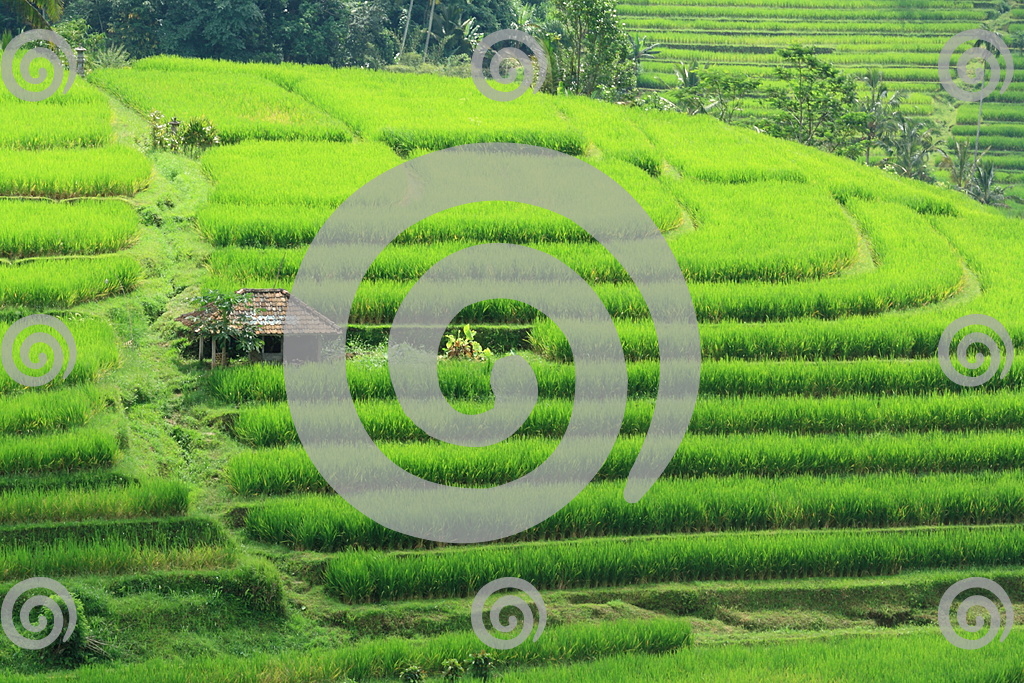Click on the photo to download without watermark.

A paddy field is a flooded parcel of arable land used for growing rice and other semiaquatic crops. Rice can also be grown in dry-fields, but from the twentieth century paddy field agriculture became the dominant form of growing rice. Paddy fields are a typical feature of rice-growing countries of east, south and southeast Asia, including Cambodia, Bangladesh, China, Taiwan, India, Indonesia, Japan, North Korea, South Korea, Malaysia, Myanmar, Nepal, Pakistan, the Philippines, Sri Lanka, Thailand, Vietnam, and Laos. They are also found in other rice-growing regions such as Piedmont (Italy), the Camargue (France) and the Artibonite Valley (Haiti), and the remains of rice paddies still define much of landscape of the Carolina Lowcountry (US).
Paddy fields can be built adjacent to otherwise natural areas such as rivers or marshes. They can be constructed, often on steep hillsides with much labor and materials. The fields require large quantities of water for irrigation. Flooding provides water essential to the growth of the crop. Water also provides a favorable environment for the rice strains being grown as well as discouraging the growth of many species of weeds. The water buffalo is one of the most important working animals adapted for life in wetlands so they are extensively used in paddy fields.
Growing rice has an adverse environmental impact because of the large quantities of methane gas it generates. World methane production due to paddy fields has been estimated to be in the range of 50 to 100 million tonnes per annum.[1] This level of greenhouse gas generation is a large component of the global warming threat produced from an expanding human population. However, recent studies have shown that methane can be significantly reduced while also boosting crop yield by draining the paddies allowing the soil to aerate, which interrupts methane production.[2]
The word "paddy" is derived from the Malay word padi, rice plant.[3]
source: Wikipedia.


0 comments:
Post a Comment